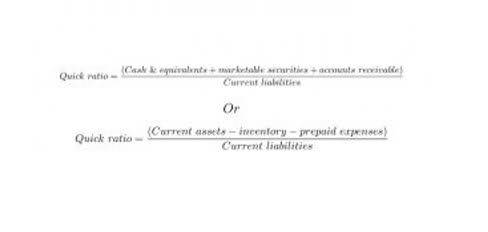Armed with this context, you can now interpret FVA calculator results with clarity—understanding not just the numbers, but what they truly mean for your retirement security. This provision allows for tax-free exchanges of existing annuity contracts for new ones, provided the annuitant and beneficiary remain the same in both contracts. These are annuities purchased within a qualified retirement plan structure, such as a 401(k) or an IRA.
Something to keep in mind when determining an annuity’s present value is a concept called “time value of money.” With this concept, a sum of money is worth more now than in the future. An annuity’s value is the sum of money you’ll need to invest in the present to provide income payments down the road. Imagine you plan to invest a fixed amount, say $1,000, every year for the next five years at a 5 percent interest rate.
Compound Interest and Time Value
- Your returns directly mirror the performance of these chosen sub-accounts—offering potential for greater growth when markets perform well, but also exposing you to possible investment losses.
- Whether you’re evaluating a pension scheme, planning retirement, or analysing investment options, understanding this concept can ensure that you make informed decisions.
- Future value, on the other hand, is a measure of how much a series of regular payments will be worth at some point in the future, given a set interest rate.
- The NAIC Model 250 specifically defines variable annuities by this characteristic, emphasizing that annuity benefits vary according to the investment experience of this separate account.
- The future value should be worth more than the present value since it’s earning interest and growing over time.
Sin embargo, this assumes you’ll invest the $100,000 and let it grow for 10 years. The difference accounts for any interest lost as each periodic payment lowers the account’s principal. Entonces, an immediate annuity that pays $10,000 per year for 10 years should cost about $81,109 with a rate of 4%. Let’s say you want to buy an immediate annuity and get a payment of $10,000 per year for 10 years. The annuity has a 4% interest rate and annual payments start the next calendar year. You get the same payout in year one as in year ten, but by that time, el $10,000 payment is worth slightly less than in today’s dollars.
This diversification effect is one reason many annuity portfolios include a mix of asset types. The Bloomberg US Aggregate Bond Index, which benchmarks the US investment-grade bond market, has historically yielded average annual returns in the 5%-6% range over the long term. To answer that question intelligently, you need context about how different investment types have performed historically. These patterns help frame realistic expectations for future returns. Some contracts also include spreads, margins, or fees (typically 1%-3%) that are subtracted from the index’s gain before interest is credited.
Then, when the time comes, this accumulated wealth transforms into regular income payments—addressing that universal worry about financial security during retirement. One reason you want to be able to calculate the current value of your annuity is that you should know the rate of accumulation. Also, you might find that you want to stop investing before you reach the payout phase. And you should know how much those funds will give you in the future. If yes, then use that knowledge to make sure that your savings are invested.
Manually calculating the present value of an annuity can be tedious, especially for complex scenarios. Tools such as pension calculators and annuity calculators can simplify this process by automating the computations. What if you find a better annuity option years after purchasing your original contract?
By the same logic, $5,000 received today is worth more than the same amount spread over five annual installments of $1,000 each. We will use the same data using annuity annuity equation formula in excel as the above example for the calculation of Annuity payments. Let us take the above example of David and determine the annuity payment if paid at the beginning of each year with all other conditions the same.
As you can see, calculating present and future value is a complex task. It’s even more complicated if you’re dealing with an indexed or variable annuity. An expert can help you look at present and future value while taking into account all the variables in your situation. As with the present value of an annuity, you can calculate the future value of an annuity by turning to an online calculator, formula, spreadsheet or annuity table.
Formula
Because there are two types of annuities (ordinary annuity and annuity due), there are two ways to calculate present value. Ow much cash you must earmark for an annuity to reach your goal of how much money you’ll receive in retirement. So the present value you’d need to invest today to cover five $1,000 payments, assuming a 5 percent interest rate, would be about $4,545.95.
Present Value of an Annuity Formula
It’s a tool for planning how much you’ll accumulate by consistently contributing to a retirement plan or understanding the total repayment amount for a loan with regular installments. In simpler terms, it tells you how much money the annuity will be worth after all the payments are received and compounded with interest. We are an independent, advertising-supported comparison service.
How do I calculate the present value of an annuity using the annuity formula?
For instance, if you buy a stock today for $100 that awards a 2% dividend each year, you can calculate the future value of that stock. Alternatively, if you want to have $10,000 of future value on hand for a down payment for a car next year, you can solve for the present value. An annuity due, sin embargo, is a payment that is made at the beginning of a period.
- Because these factors help insurance companies estimate your life expectancy.
- Next is the surrender period—a timeframe often spanning 5-10 years but potentially stretching from 3 to over 15 years.
- As long as all of the variables surrounding the annuity are known, such as payment amount, projected rate, and number of periods, it is possible to calculate the future value of the annuity.
- To account for payments occurring at the beginning of each period, the ordinary annuity FV formula above requires a slight modification.
- Pension plans can often involve annuities, where you receive regular payouts during retirement.
- Upon withdrawal, only the portion representing your earnings gets taxed as ordinary income.
An example of an ordinary annuity includes loans, such as mortgages. The payment for an annuity due is made at the beginning of each period. This variance in when the payments are made results in different present and future value calculations. An annuity is a financial product that provides a stream of payments to an individual over a period of time, typically in the form of regular installments.
You buy an annuity either with a single payment or a series of payments, and you receive a lump-sum payout shortly after purchasing the annuity or a series of payouts over time. The discount rate is a key factor in calculating the present value of an annuity. The discount rate is an assumed rate of return or interest rate that is used to determine the present value of future payments.
Annuity Payment Formula Explained
Por ejemplo, if the future value of $1,000 is $1,100, the future value factor must have been 1.1. A future value factor of 1.0 means the value of the series will be equal to the value today. The present value of an annuity refers to how much money would be needed today to fund a series of future annuity payments. Or, put another way, it’s the sum that must be invested now to guarantee a desired payment in the future. While direct property investment isn’t typically an option within annuity contracts, some variable annuities offer sub-accounts investing in REITs or real estate-focused mutual funds. Ever wondered what happens to your money when it’s locked away for decades, quietly growing until retirement?





